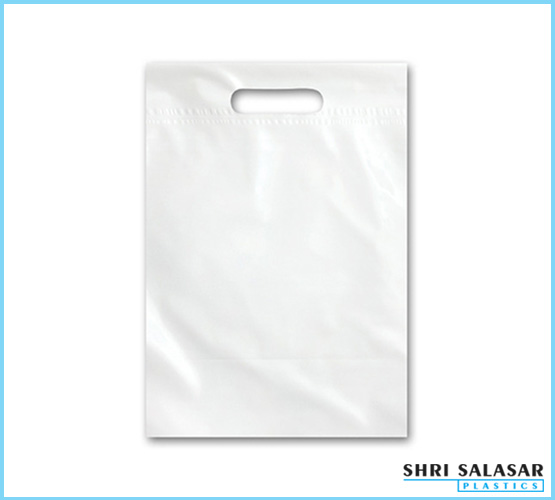HM (High Molecular) liner bags are widely used in industries for transporting and storing heavy, sensitive, or hazardous materials. To ensure optimal performance, durability, and safety, it’s crucial to follow best practices in their usage. Here’s a comprehensive guide:
1. Selection of the Right Bag
Choosing the appropriate HM liner bag for your specific application is critical.
Factors to Consider:
- Material Type: Ensure the bag is made from high-quality polyethylene for maximum strength and flexibility.
- Size and Thickness:
- Select a thickness appropriate to the weight and type of material (e.g., 50 to 100 microns for moderate loads; thicker for heavier or abrasive materials).
- Choose the right dimensions to fit the container or outer packaging (e.g., jumbo bags, cartons, drums).
- Chemical Resistance:
- Verify the bag’s compatibility with the chemicals or substances being stored to prevent reactions or leaks.
- Specialized Features:
- UV-stabilized bags for outdoor applications.
- Anti-static liners for materials sensitive to static electricity.
- Food-grade liners for items requiring strict hygiene.
2. Proper Storage Before Use
Storage Tips:
- Avoid Direct Sunlight: Prolonged exposure to UV rays can weaken the material. Store the bags in a shaded, cool place.
- Temperature Control: Maintain storage temperatures between 10°C to 30°C to prevent brittleness or warping.
- Moisture Protection: Store in a dry environment to avoid condensation buildup, especially if the bags are stacked.
- Stacking: Stack rolls or folded bags properly to prevent deformation.
3. Safe and Efficient Filling
Proper filling techniques ensure that the liner bags perform optimally without damage or contamination.
Best Practices During Filling:
- Support the Bag: Use a sturdy container (e.g., FIBCs, boxes, or drums) to support the liner bag during filling.
- Prevent Overfilling: Fill only to the recommended capacity to avoid overstressing seams and reduce the risk of tearing.
- Use Automated Systems:
- Employ automated or semi-automated filling systems for consistent and efficient loading.
- Ensure that the systems are calibrated to avoid sudden impacts or stretching.
4. Secure Sealing and Closure
Proper sealing is crucial to prevent leaks, spills, and contamination during transport and storage.
Sealing Options:
- Heat Sealing: Offers an airtight, tamper-proof closure, ideal for powdered or hazardous materials.
- Tie Closures: Simple and effective for less sensitive materials.
- Zipper or Velcro Closures: Convenient for reusable liners.
Inspection:
- After sealing, inspect for any visible gaps, tears, or incomplete seals.
5. Handling and Transport
Handling and transporting HM liner bags require care to ensure the materials remain intact.
Best Practices:
- Use Pallets and Straps: Place filled bags on pallets and secure them with straps or shrink wrap to stabilize the load during transport.
- Avoid Sharp Objects: Prevent contact with sharp edges or abrasive surfaces to minimize punctures.
- Stacking in Transport:
- Follow recommended stacking limits to prevent compression damage.
- Place heavier bags at the bottom and lighter ones on top.
Check out this article about chemical paper bags
6. Maintenance and Reuse
For industries aiming to reduce waste and costs, reusing HM liner bags can be a viable option when done correctly.
Maintenance Tips:
- Inspect After Use: Check for signs of wear, tears, or chemical damage.
- Cleaning:
- If the bag is not contaminated, clean it using compressed air or mild detergents.
- Ensure thorough drying before reuse to prevent mold or material degradation.
Reuse Scenarios:
- Only reuse bags for similar or non-critical applications if they remain structurally sound.
- Avoid reusing bags that previously held hazardous or reactive substances.
7. Environmental Considerations
As sustainability becomes a focus, it’s essential to consider the environmental impact of HM liner bags.
Recycling and Disposal:
- Recycle: HM liner bags are recyclable, provided they are cleaned and sorted correctly.
- Disposal:
- If recycling is not feasible, dispose of the bags in accordance with local regulations, especially if they were used for hazardous materials.
Eco-Friendly Alternatives:
- Consider using biodegradable or recyclable variants of HM liner bags to reduce environmental impact without compromising quality.
8. Compliance with Industry Standards
Ensure your use of HM liner bags adheres to industry-specific regulations and standards:
- Food and Beverage: Use FDA-approved, food-grade HM liner bags for materials that will come in contact with food.
- Chemical Industry: Follow UN certifications for transporting hazardous chemicals.
- Pharmaceuticals: Ensure compliance with GMP (Good Manufacturing Practices) for safe handling of raw materials.
Conclusion
HM liner bags offer a durable, cost-effective, and versatile solution for industrial applications, but their performance hinges on correct usage. By selecting the right bag type, handling it properly, and adhering to best practices, industries can ensure safe transport and storage, minimize waste, and optimize overall operational efficiency.





